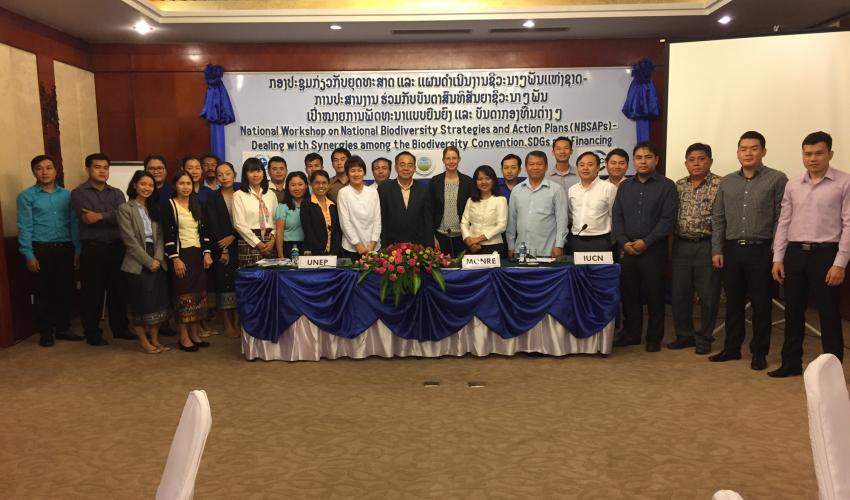Biodiversity and sustainable development goals in Lao PDR: Identifying the links
A huge amount of the world's life, including human life, is dependent on biodiversity, making its loss one of the world’s most pressing crises. It is estimated that the current species extinction rate, for example, is between 1,000 and 10,000 times higher than it should be. Globally, converting natural areas for agriculture and urban development, introducing invasive alien species, polluting or over-exploiting natural resources including water and soil and harvesting wild plants and animals at unsustainable levels are the main drivers of this loss.

Photo: The Dong Ampham National Biodiversity Conservation Area in Lao PDR © Aleksey Gnilenkov under a Creative Commons License
In Lao PDR, biodiversity is directly related to poverty and development in communities. Therefore it's crucial to conserve and protect it. For example, studies have indicated that as much as 80% of the country’s rural population depends on fish as a main source of protein, on Non-Timber Forest Products (NTFP) as part of daily subsistence and fresh water for drinking, cooking and cleaning.
As a developing country, Lao PDR faces numerous challenges in terms of sustainable management of biological diversity and responsible usage of natural resources. That's why the Government of Lao PDR has, realising the need to protect biodiversity, begun establishing a national protected area system, as well as enacting new laws, decrees, directives and regulations on the management of forests, aquatic ecosystems and wildlife. Moreover, the Government of Lao PDR has been taking strong steps towards honoring their obligations to the Convention on Biological Diversity (CBD) – also known as one of the Rio Conventions, which they signed in 1996.
IUCN has been able to engage productively with the Government of Lao PDR through the Ministry of Natural Resources and Environment (MoNRE) with regards to providing technical support for the preparation of the country's vital National Biodiversity Strategy and Action Plan (NBSAP) and the National Report. IUCN has been able to continue its commitment by supporting the government to better understand the synergies among the Biodiversity Conventions, Sustainable Development Goals (SDGs) and Financing.
IUCN, in collaboration with MoNRE and the United Nations Environment Programme (UNEP) organised a workshop on 29-30 September 2016, chaired by Dr. Inthavy Akkharath, Acting Secretary General of Lao PDR National Mekong Committee, Ministry of Natural Resources and Environment.
 Photo: Participants attend the workshop to support the the effective implementation of the Lao PDR NBSAP © Angela Jöhl Cadena / IUCN
Photo: Participants attend the workshop to support the the effective implementation of the Lao PDR NBSAP © Angela Jöhl Cadena / IUCN
This important event aimed to identify, understand and promote synergies and cooperation among different biodiversity-related conventions (CBD, CITES, CMS, Ramsar, WHC, ITPGRFA and IPPC). It also aimed to identify and promote links between the SDGs and MEAs using Lao's NBSAP as the entry point. Lastly, the workshop proved useful in identifying financing options and to promote effective implementation of the NBSAP in Lao PDR.
Bringing together officials, civil society and international organisations at this workshop, who all have a common objective in improving the country's sustainable management of biological diversity and responsible usage of natural resources, was a modest but important step forward in implementing Lao PDR's NBSAP effectively.
